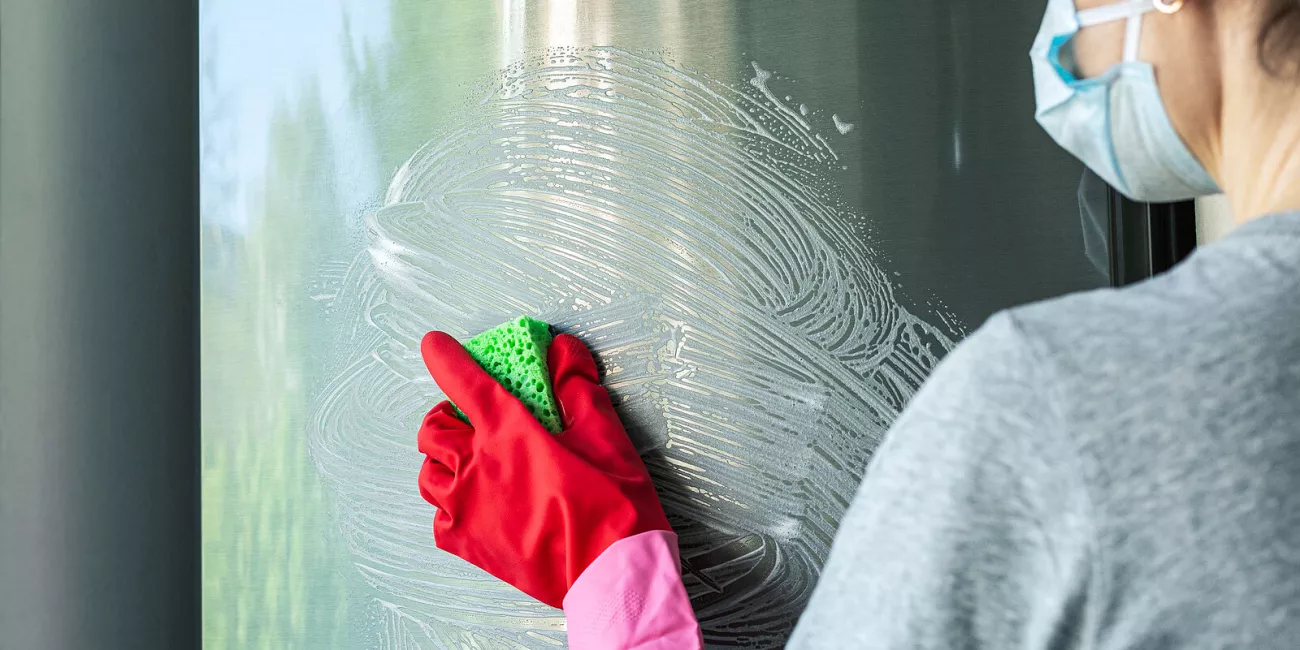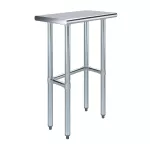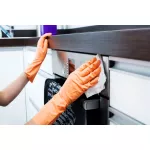Reviving Stainless Steel Brilliance: A Guide to Scratch Removal

Stainless steel is still a preferred material for kitchen fixtures like appliances, bread racks, kitchen prep tables, and, most importantly, sinks because of its streamlined appearance and robustness. Nevertheless, despite its durability, steel might develop unsightly scratches due to routine use. Thankfully, it is quite possible to reduce these indicators of aging and even wholly erase scratches from stainless steel.
Keep reading to learn our suggested techniques for how to remove scratches from stainless steel. We will focus on how to remove scratches from stainless steel sinks in this article, but the methods can be applied to all types of non-coated stainless steel items.
Coated vs. Uncoated Stainless Steel
Some stainless steel appliances and accessories have a protective synthetic layer that reduces fingerprints. Applying the techniques indicated here on steel with an artificial surface or a clear protective finish will only do more significant harm. You can only use our stainless steel cleaning techniques on uncoated stainless steel. Make sure to test your stainless steel before you complete any of these repair techniques to protect it from additional damage.

Clean Your Stainless Steel Area First
Before doing any DIY or industrial stainless steel cleaning repairs on your stainless steel, clean the impacted area with white vinegar and clear water or a commercial cleaning solution made for stainless steel. To stop further harm, wipe with a clean cloth while following the grain. This will allow you to analyze just how bad the scratches are and what your next steps should be.
How to Deal With Small Scratches
A non-abrasive stainless steel scratch removal compound will work to fill in the fine lines and smooth the surface on less serious nicks and dings. Both powdered and liquid non-abrasive cleansers are available. To smooth up the steel surface, the cleaner operates by filling in tiny lines.
For this reason, there are helpful products on the market, including Rolite Metal Polish and 3M Super Duty Rubbing Compound. You can also experiment with everyday items like baking soda or non-gel toothpaste. Several microfiber towels are also necessary for applying and removing the compound.
One product that is specifically designed for stainless steel sinks is Bar Keeps Friend. It is made to minimize the appearance of scratches inside your steel sink and can be used with the steps below.
For how to remove scratches from stainless steel with minor scratches complete the following:
- Clean the stainless steel surface with diluted vinegar and a soft cloth such as microfiber.
- Determine which way the grain of the stainless steel is going so you can work in the same direction.
- Rub the scratch repeatedly with a microfiber cloth and a tiny bit of whatever compound you have decided on. Work softly and along the grain of the material.
- Let your stainless steel compound sit on your surface for a few minutes.
- Use a clean, damp microfiber towel to remove the compound after a few minutes, then assess your results. If necessary, polish once more using an extra compound to get the desired effects.
- Use a clean microfiber towel and dilute vinegar to remove the remaining compound from your stainless steel surface.
How to Deal with Deep Scratches
Although shallower scratches are more straightforward to repair than deeper ones, more severe scratches can also be improved. It might be required to use an abrasive pad to remove tougher scratches.
One approach for how to remove deep scratches from stainless steel is to use sandpaper and cooking oil, such as olive oil, to smooth out the scratches. The surface must be clear and coat-free for this technique to be effective; otherwise, you risk unintentionally doing more harm.
Other products come with everything you need to erase deeper scratches, such as Scratch-B-Gone.
You can do this with DIY methods or by using scratch remover kits. In most cases, buffing compounds and various abrasive pads are included in scratch remover kits. To repair defects in the stainless steel and repair the surface, work from the coarsest grit to the finest.
For how to remove scratches from stainless steel with deeper scratches, follow the below steps:
- Clean your stainless steel surface with a diluted vinegar mixture and a clean microfiber towel.
- Confirm the grain of your stainless steel surface so you can work in the same direction.
- While constantly buffing with the grain, apply a few drops of oil to the sponge and buff the surface with a firm, moderate pressure.
- To create a more uniform appearance, extend your work beyond the scratch.
- Review your work, then try again if required. You will want to work from higher grit to finer grit pads as the scratch gets buffed out.
- Once satisfied with the results, rub the same spot with a fresh, dry microfiber cloth and diluted vinegar to eliminate any remaining oil.
Use a stainless steel polish to wipe and polish the surface once you've taken care of all the scratches on your stainless steel surface. Consider consulting a specialist with experience in fixing stainless steel surfaces if you are skeptical of your capacity to repair scrapes from your stainless steel surfaces on your own.
Tips for Removing Scratches from Stainless Steel
If this is your first time removing scratches from your stainless steel surface, it might seem like a daunting process. To help you, we have created a few tips to make the process easier.
- If you can???t find a scratch removal kit, you can always use whitening, not gel, toothpaste.
- Never use steel wool pads to buff the scratches on your sink. There is a potential for the small metal pieces to break off and cause rust in your sink.
- Don???t buff your scratches in a circular motion. You want to work directly with the grain of your stainless steel surface.
- You can avoid scratches by regularly maintaining your stainless steel surfaces. In sinks, this can mean avoiding abrasive substances and using a dish mat to protect the surface while the stainless steel sink is being used.
- Do not use bleach or bleach cleaners like Magic Erasers on your stainless steel surfaces.
Conclusion
While stainless steel is strong and resistant to corrosion, it is not impermeable and is susceptible to scratches; thus, frequent cleaning and maintenance are necessary to maintain the beauty of stainless steel equipment. Avoid using steel wool or other abrasives while cleaning and maintaining your metal surfaces like your sinks or stainless steel tables if you want to keep them looking brand new.
If taken care of properly your stainless steel will last for years to come, but it's always wise to know how to remove scratches from stainless steel in case the need arises. Don't rely on searches for how to remove scratch from stainless steel; instead, take our advice to keep your stainless steel shining and working efficiently.
Related Products
14 in. x 24 in. Open Base Stainless Steel Work Table
An open base stainless steel utility work table is a great addition to any home or business. It is perfect for a variety of tasks, including a workben..
$164.95 Ex Tax: $164.95
Related Articles
A Guide to Industrial Stainless Steel Cleaning
Stainless steel is often a preferred material for various industries from restaurants to workshops. This is because of how durable and long-lasting th..
A Guide to Choosing Tables for Your Space
Stainless steel tables are versatile and essential fixtures in various environments, such as commercial kitchens, laboratories, hospitals, and manufac..



